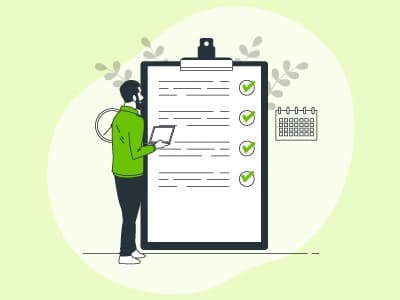
Implementing a learning management system (LMS) can streamline training and boost engagement, but many companies struggle to achieve their desired results. Research shows that around 77% of United States-based organizations use e-learning platforms for professional development and 67% fail to meet the financial and performance goals of their LMS.
Unfortunately, these failures are less about the LMS itself and more about poor implementation. Therefore, the importance of following a proper LMS implementation checklist, plan, and timeline cannot be stressed enough. A strategic implementation plan can be a game-changer for your workforce development, and this guide provides a comprehensive LMS implementation plan to help you execute it.
Implementing an LMS is a crucial step toward advancing your business's learning and development (L&D) efforts. Doing it right can mean the difference between a successful training campaign or a wasted investment worth thousands of dollars, countless hours, and valuable resources.
This is where following best practices for a successful LMS implementation becomes essential. A well-planned, strategic LMS implementation checklist will help you:

Once you have selected the best LMS software for your business, the next step is to move forward with a structured implementation plan and timeline. This involves strategically setting up the system, evaluating its performance, and refining the process as needed. To help you with the process, we have developed a 5-step LMS implementation guide to help you seamlessly carry out your LMS implementation.
Step 1: Define Your LMS Implementation Project Plan
In simplest terms, an LMS implementation project plan details out the entire process of deploying and integrating an LMS into an organization. This step focuses on setting up clear objectives and assembling the right team and resources to achieve those goals by employing the LMS.
Define Clear Goals
Assemble Implementation Team
Once you’ve established your goals, it’s time to put your LMS implementation dream team together to oversee the training program. The number of team members can vary depending on the size of your organization and the complexity of the program, but it should include:
Step 2: Set A Realistic LMS Implementation Timeline
Establishing a realistic and feasible time frame for your LMS implementation process will help you keep the project on schedule and aligned with business objectives. A typical LMS implementation timeline can look like this:
Phase Of LMS Implementation | Expected Timeline | Milestones And Deliverables |
Planning And Need Analysis | 2-4 weeks |
|
LMS Implementation Project Plan | Several days to weeks, depending on the complexity of the project |
|
Content Development And Migration | 4-8 weeks |
|
Configurations And Customization | 2-8 weeks |
|
Test Campaigns And Pilot Projects | 2-4 weeks (depending on the complexity of the tested project) |
|
Launch Phase | 2-4 weeks |
|
Total Timeline: 1 to 12 months
Step 3: Prepare Data And Content Migration
Content creation and migration are among the most critical aspects of an LMS implementation. Think of it as the fuel powering your LMS—without well-structured courses, training exercises, and learning material, the software alone cannot drive successful L&D outcomes.
In this step, you can either choose to use your existing learning material, create new content, or take a blended approach by combining both. In any case, keep these Do’s and Don’ts in mind when preparing your training material and data.
Once your data and content are ready, migrate them to your LMS. If you're transferring existing data to the new system, consult a technical expert or IT specialist for a smooth migration process.
Step 4: Customize The LMS To Your Needs
This step focuses on configuring the LMS to align with your organization's specific needs and is considered critical for its role in usability and user experience. While customization features may vary depending on the LMS solution you choose and the unique needs of your business, you can begin by:
Step 5: Test The System And Train Your Team
Once you have prepared your content and customized your solution, now is the moment to see if your LMS implementation plan stands the test of time. This phase will determine how effective your whole implementation process has been, along with how successful it will be when you scale it. Follow these LMS implementation steps very carefully to test your system and train your team for a streamlined learning experience.
System Testing
Official LMS Launch
Once your test run is successful or you have made the necessary adjustments to optimize its effectiveness, it's time to officially launch your LMS across the company/departments/team.
Following these LMS implementation steps will help you maximize the benefits of an LMS, ensuring it drives effective workforce training, engagement, and performance outcomes.
An LMS implementation timeline is usually flexible and depends on the organizational size, structure, and complexity of the training program. Smaller companies with a straightforward training model can go live in as little as 1 to 3 months, while larger organizations may require up to 6–12 months to implement their LMS fully.
The exact cost of an LMS implementation process depends on business size, software solution, and customization features. You can expect the average LMS implementation cost to be somewhere near:
- $5,000 to $25,000 for small to medium-sized businesses covering initial setup, data migration, and user training
- $50,000 for companies requiring advanced features like gamification, custom reporting, or multi-platform integration
Subscription-based platforms like SkyPrep, TalentLMS, Skillsoft, and Traliant typically fall within the same range, offering training, compliance, and performance management tools.
- $300,000 to $400,000 for custom-built systems due to tailored functionalities, UI/UX design, and extensive integration options.
If you want a more personalized suggestion for LMS implementation cost tailored to your company's requirements, contact us here.
